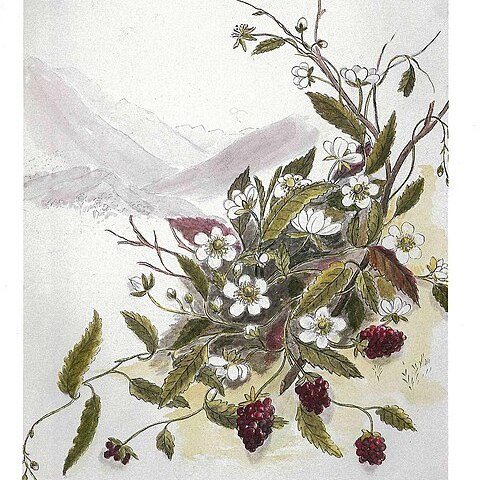Low-growing shrub; creeping stems up to 1 m long, rooting at nodes, terete, glabrous; armature of small prickles restricted to young stems. Lvs reduced to a single leaflet; leaflet lamina coriaceous, linear-lanceolate to linear-oblong or ovate-lanceolate, (20)-25-90 × 5-22 mm, sometimes with a pair of obscure lobes near base, glabrous on both surfaces or with sparse scattered hairs on midrib, veins and margins, bronze-green on upper surface, paler on lower, sharply serrate-dentate. Infl. a few-flowered panicle or fls solitary. Petals white. Drupelets red.
A vine which creeps along the ground. The stems are thorny. The leaves are undivided. They are long and narrow and have teeth and are slightly prickly. They are a bronze-green colour which becomes more distinct in cold weather. The flowers are white. The fruit are red and juicy compound berries. They are 2.5 cm long.

